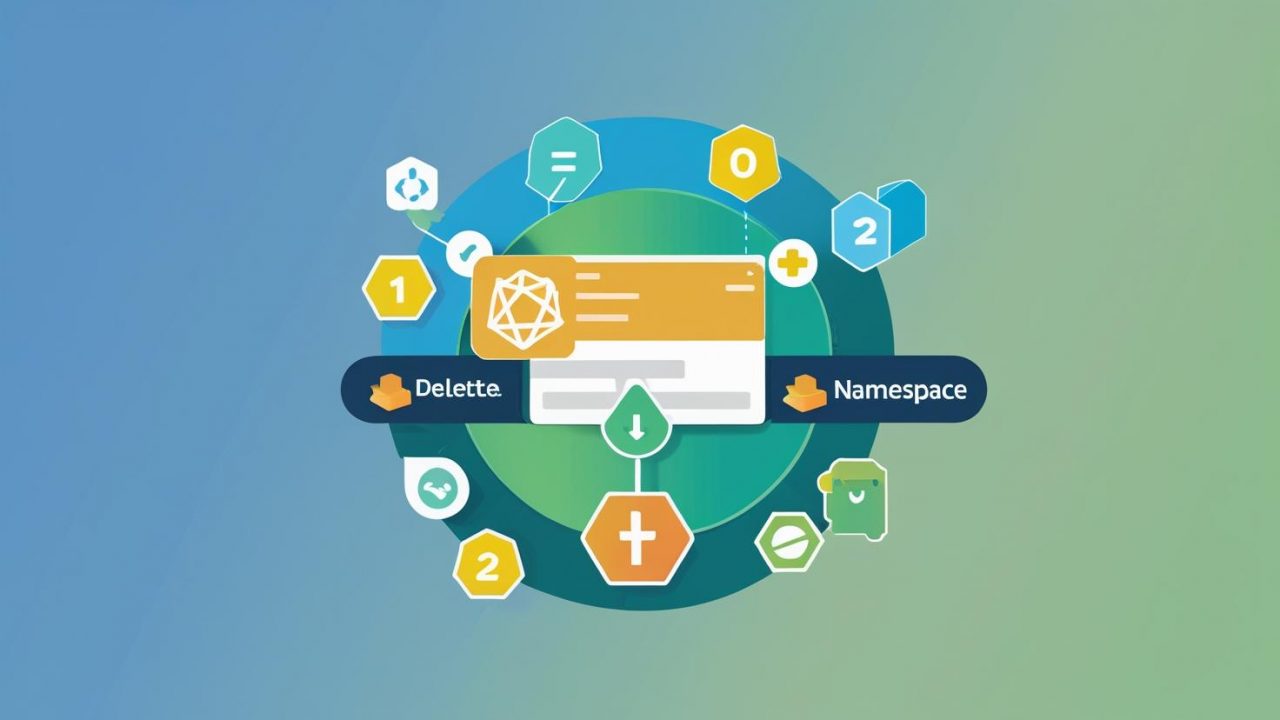How to Delete a Namespace in Kubernetes: Step-by-Step Guide by OpsNexa
Namespaces in Kubernetes are a powerful way to organize and isolate resources such as pods, deployments, and services within a cluster. However, there comes a time when a namespace needs to be deleted—maybe it’s part of a cleanup process, project shutdown, or environment decommissioning.
At OpsNexa, we often assist clients in performing safe and clean namespace deletions to avoid leaving behind orphaned resources or dangling finalizers. This guide walks you through everything you need to know about how to delete a namespace in Kubernetes, along with common pitfalls and advanced troubleshooting.
What Is a Kubernetes Namespace and Why Would You Delete It?
Namespaces in Kubernetes are virtual clusters backed by the same physical cluster. They provide a scope for names, enabling better resource organization and role-based access control (RBAC). Namespaces are particularly useful for:
-
Separating dev, staging, and production environments
-
Managing multi-team or multi-project clusters
-
Applying resource quotas and limits
-
Controlling access via RBAC
You might want to delete a namespace when:
-
A project is complete or shut down
-
You’re cleaning up old testing environments
-
You’re migrating workloads elsewhere
-
The namespace is stuck or in error state
Removing a namespace deletes all its resources, including pods, services, configmaps, secrets, etc. Therefore, it must be done with care.
How to Delete a Namespace in Kubernetes (Basic Method)
Deleting a namespace is straightforward using kubectl:
Example:
This command sends a deletion request to the Kubernetes API server, which then begins a graceful cleanup of all resources in that namespace.
To confirm deletion:
You’ll see the namespace marked as “Terminating” until all resources are deleted.
⚠️ Important: The deletion is irreversible. Make sure no critical data or services exist in the namespace before deleting.
At OpsNexa, we recommend exporting resource definitions before deletion using kubectl get all -n <namespace> -o yaml > backup.yaml just in case you need to restore them later.
Understanding the Namespace Terminating State
Sometimes, the deletion of a namespace gets stuck in the “Terminating” state. This usually happens when:
-
Finalizers are blocking deletion
-
Resources can’t be removed due to misconfiguration
-
A custom controller or webhook is not responding
You can inspect a namespace’s status with:
Look for the finalizers field. If present, the namespace won’t be deleted until all finalizers are resolved or manually removed.
Common reasons for stuck namespaces:
-
Hanging finalizers on custom resources
-
Stuck PVs or PVCs
-
Failing admission controllers or webhooks
At OpsNexa, we often see environments get cluttered with half-deleted namespaces due to finalizer issues—especially in multi-tenant clusters. Proper cleanup routines are essential.
Force Delete a Stuck Namespace (Advanced)
To delete a namespace stuck in “Terminating,” you’ll need to manually remove the finalizers. This should be done only if you’re sure that it won’t affect production systems.
Steps to Force Delete:
-
Get the Namespace in JSON Format:
-
Edit the JSON to Remove Finalizers:
Opentemp.jsonand remove the entire"finalizers"section from.spec. -
Apply the Edited JSON:
Important: This bypasses Kubernetes’ normal cleanup procedures. Use this only for namespaces that are truly stuck and not actively running services.
Best Practices for Namespace Management (OpsNexa Insights)
To avoid problems when deleting namespaces, follow these best practices:
✅ Automate Resource Cleanup
Use tools like Helm and Kustomize to manage resource lifecycles. Deleting a Helm release also removes all related resources.
✅ Use Labels and Selectors
Apply labels to namespace resources to easily audit and manage what’s running:
✅ Monitor Namespace Lifespans
Regularly audit namespaces with:
Set expiration labels or use tools like Kyverno or OPA Gatekeeper for policy enforcement.
✅ Secure Namespaces with RBAC
Limit who can delete namespaces by applying strict RBAC policies:
At OpsNexa, we often use namespace-as-a-service models where namespace lifecycles are automatically tied to Git repositories, making deletion as simple as closing a PR.
OpsNexa Pro Tips for Managing Namespace Deletion in Production
Deleting namespaces in production requires an even more careful approach. Here are OpsNexa’s expert recommendations:
🔄 Backup Everything
Before deleting, back up YAML definitions:
Also consider backing up:
-
Secrets
-
PVCs
-
ConfigMaps
-
Ingress rules
📦 Drain Workloads Gracefully
Scale down workloads before deletion:
🚨 Alert and Audit
Make sure alerting systems are in place to detect accidental deletion:
-
Enable audit logging in Kubernetes
-
Use monitoring tools like Prometheus/Grafana
🔐 Use Admission Controllers
Prevent accidental deletions by restricting deletion actions using Kubernetes admission controllers or policies.
🧹 Automate Cleanup Pipelines
Create a cleanup pipeline that:
-
Deletes test namespaces nightly
-
Validates if a namespace is inactive before removal
-
Logs every deletion
At OpsNexa, we help teams build safe namespace management workflows using GitOps, pipelines, and policy automation to reduce human error and ensure auditability.
Final Thoughts: Manage Kubernetes Namespaces with Confidence
Namespaces are essential to scalable and secure Kubernetes architecture. Knowing how to delete a namespace in Kubernetes safely helps maintain a clean, efficient, and resilient cluster.
From basic kubectl delete commands to advanced force-deletion methods and policy enforcement, this guide from OpsNexa equips you with the knowledge to manage namespaces like a pro.
If you’re dealing with stuck namespaces, resource sprawl, or RBAC confusion, OpsNexa’s DevOps experts are here to help. We specialize in Kubernetes automation, governance, and lifecycle management—so you can focus on building, not babysitting.
Contact OpsNexa for Devops architect and devops hiring solutions.



